Gerhard Ertl
Biographical
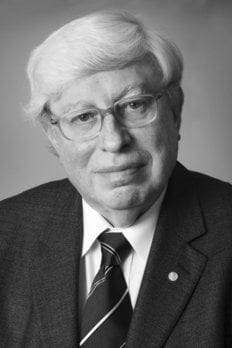
I was born on 10 October 1936 in Bad Cannstatt which is part of the city of Stuttgart in the southwest of Germany. When I was 3 years old, the family moved to the nearby village of Schmiden where I entered elementary school in 1942. In summer 1946, I was admitted to Johannes Kepler Gymnasium (high school) in Bad Cannstatt where I passed the final examination (Abitur) in spring 1955. I had been a fairly good student with some (but not particularly strong) interests in science and history. Computers were not yet available in those days, and it was hence quite common for boys to do at home some chemical experiments. I had a good book on this topic and enjoyed very much to follow its prescriptions in my bedroom. There was, however, sometimes some strong smelling or strange noise so that my mother became afraid of my health and asked me to stop these activities. As a consequence, I turned my interest to radio sets and therefore from chemistry to physics. Since I was very good in mathematics I also decided to study physics instead of chemistry and entered the Technical University of Stuttgart in 1955 where I also obtained my diploma in 1961, after spending some time in between at the universities of Paris and Munich. My studies at these latter places were of more general nature but I attended also lectures from a few of the heroes of my subject – de Broglie, Joliot, Heisenberg.
Since my childhood I was also interested in music and played the piano. While being a student I became among others member of a band and earned in this way quite some money. As can be seen from fig. 1, in those days there existed no electronics but simply only acoustics.
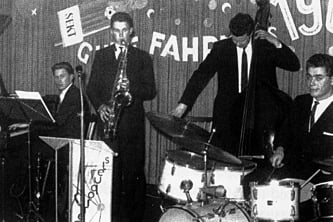
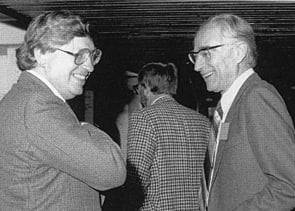
For my diploma thesis work I decided to return to chemistry, and hence physical chemistry became my subject of choice. I had the great luck to find a mentor who was not only an outstanding scientist but also an inspiring person with great humanity: Heinz Gerischer (fig. 2) was one of the leading electrochemists of the 20th century, but also interested in other problems of physical chemistry. Just before I joined his group Manfred Eigen in Göttingen had developed novel techniques for studying the kinetics of very fast reactions in solution for which work he received the Nobel Prize in Chemistry in 1967. Gerischer had the idea that such a method could also be based on rapid heating of an aqueous phase by a short pulse of microwave radiation. This was my first contact with real research, and I became fascinated by the challenge to develop such an apparatus and measure the rate constant of one of the most fundamental reactions in chemistry, the recombination between H+ and OH– to H2O. I could solve this task successfully, but it became soon clear that the applicability of this technique would be limited, and hence I asked Gerischer for another project for my Ph.D. work. After briefly considering some more conventional problems of electrochemistry, he told me: “If you really want to enter a field on which we know only little, instead of studying the solid/liquid interface think what you could find out about the solid/gas interface. I have no idea about this field, but you will have all freedom and my full support as far as available to me.”
At this time Gerischer accepted an offer from the technical University of Munich, and I joined him as an assistant and made my first steps in the just emerging area of surface science. In order to keep a surface clean for long enough time, ultrahigh vacuum (UHV) was required which in those days could only be achieved by sealed glass systems evacuated by mercury diffusion pumps and baked to 450° C – a real adventure. I managed to build such an apparatus and was studying the reaction 2H2+O2 -> 2H2O at surfaces of Germanium single crystal surfaces – not the best choice, but at least sufficient to provide me my Ph.D. degree in early 1965. Much more successful and rewarding was meeting Gerischer’s secretary Barbara Maschek. In the meantime we have been married for 43 years and have two (also married) children and four grandchildren.
During my thesis work the first stainless-steel UHV systems and low energy electron diffraction (LEED) as experimental tool providing information about atomic structures of surfaces became commercially available, and the German Science Foundation (DFG) was soon willing to fund such an apparatus for us.
Now the real surface science era began. I first studied the interaction of oxygen with various Cu single crystal surfaces and made also the first attempt to study the progress of a surface reaction along this approach. This was continued together with my first Ph.D. student, P. Rau, where we combined structural information from LEED with thermodynamics and kinetics in the interaction of O2 and CO with a Pd(110) surface. In 1967, I received my next academic degree (Habilitation), and soon afterwards I was appointed professor of physical chemistry at the Technical University of Hannover. There the studies on adsorption and reactions of small molecules at metal single crystal surfaces were continued, new experimental techniques were incorporated, and the group was continuously growing until 1973 (fig. 3) when I accepted an offer from the University of Munich to succeed one of the ‘grand old men’ in catalysis, G. M. Schwab.
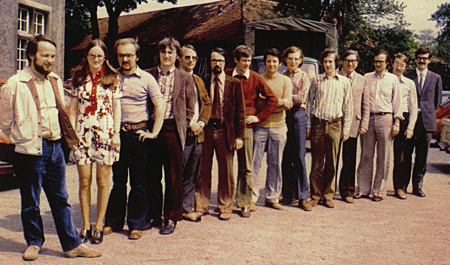
Practically all coworkers joined me. New equipment was acquired, and new problems were studied. In this period, for example, the mechanism of catalytic ammonia synthesis was elucidated after I learned at a conference, that despite of fifty years of research this was still an open problem. But also more physical problems were investigated, such as the study of the electronic properties of the outermost atomic layer by deexcitation of metastable noble gas atoms, and the construction of a molecular beam apparatus initiated our studies in the field of gas/surface dynamics. Fig. 4 shows me in the yard of the institute in front of A. von Baeyer, the 1905 winner of the Nobel Prize in Chemistry. In between I spent two half-year sabbaticals in California (Caltech and Berkeley).
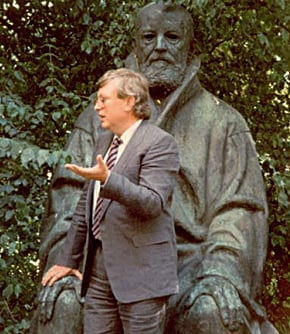
But also this fruitful era came to an end when I received an offer from the Max-Planck Society to become the successor of my teacher Heinz Gerischer as director at the Fritz-Haber-Institut in Berlin. Gerischer served in this position since 1969 and was a student of Karl-Friedrich Bonhoeffer who in turn was Fritz Haber’s assistant until his emigration in 1933. This continuing genealogy was certainly also a factor influencing my decision to move to Berlin. There I took over the fairly large department of Physical Chemistry which grew even further by all the coworkers arriving from Munich. Our main activities concentrated there on the investigation of nonlinear dynamics and spatio-temporal pattern formation (including theory), following surface processes on atomic scale by scanning tunnelling microscopy, the dynamics of fast surface processes studied by femtosecond laser techniques, but also exoelectron emission in surface reactions and atomic-scale electrochemistry etc.
After official retirement in October 2004, I am still active in writing and giving lectures.
This autobiography/biography was written at the time of the award and first published in the book series Les Prix Nobel. It was later edited and republished in Nobel Lectures. To cite this document, always state the source as shown above.
Nobel Prizes and laureates
Six prizes were awarded for achievements that have conferred the greatest benefit to humankind. The 12 laureates' work and discoveries range from proteins' structures and machine learning to fighting for a world free of nuclear weapons.
See them all presented here.
